Face brick walls in your home - you either love it or hate it. They impart a sense of age and texture to a room but they can easily overwhelm a small space.
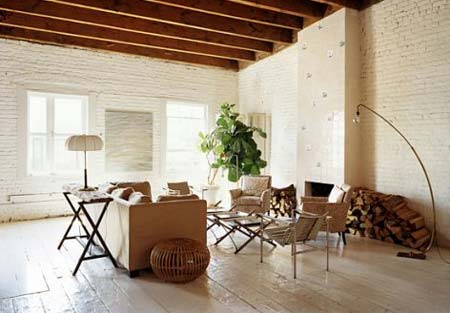
There are some people who believe exposed brick should never be painted. People on the other side of the issue feel that brick is heavy and dark and the best path to happiness is a coat of paint.
Admittedly, it’s a tough choice. After all, the patina that old brick takes on with age can be exceptionally beautiful. So can the warm yet industrial feel. On the other hand, we have been in apartments with lots of exposed natural brick and we’ve felt a certain sense of heaviness. This is often exacerbated by the fact that many people with exposed natural brick are loathe to hang artwork on their exposed brick walls.
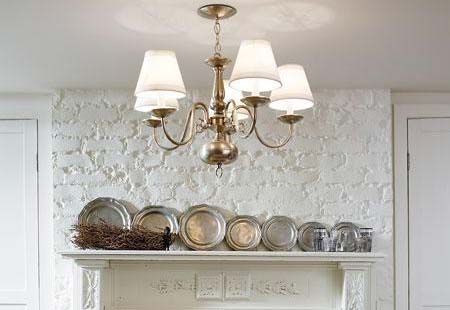
Ask yourself these questions if you’re considering painting your exposed brick:
- What kind of feel do you want your space to have?If you’re going for a light and airy feel, exposed brick is not going to give it to you. Painted brick works best in spaces that are dark, with too few windows, or if there is a lot of exposed brick in the space.
- What is the condition of the brick itself?What colour is the brick? Is the wall exceptionally dusty or in bad shape? Is the wall exceptionally damp? If your brick has an unsatisfying colour, or if the wall is dusty, you may be better off painting the brick. If you want to keep your brick its natural colour without the dust, you can use Prominent Paints Brick Dressing, which is designed to treat natural brick without changing the colour.
- Are you planning to sell soon?
Because painted brick is such a polarizing issue, you may be better off leaving your brick unpainted if you will need to sell your home soon. Leaving the brick unpainted may turn off buyers who love painted brick, but they will know that they can always paint it. On the other hand, those who hate painted brick may feel that there’s not much they can do to change a painted brick wall.
- Are there other options for lightening your space?If painting the brick seems like too big of a step, and yet you want to brighten up a dark room, try hanging mirrors and artwork on your brick wall instead. A painting in light tones and pale shades will contrast with the brick and help balance out the dark wall. We see too many homes where owners allow a huge expanse of exposed brick to stand naked, thus overwhelming a space.
Whilst some enjoy being surrounded by the raw beauty of face brick walls, there are others that find it old fashioned, drab and a nightmare to keep clean. There are options ...

As pizazz to interior brick walls and brighten up your home. Paint is an easy way to put new life into a dingy brick wall and it's an easy project that requires only a few basic materials.
1. Preparation, cleaning and repair
The first and most important step in the entire process is to ensure that brickwork is clean and in good condition. Give the wall a good brushing with a nylon scrubbing brush and follow this up by cleaning with a vacuum cleaner to clean out between any gaps. Whilst doing this you can also check out the wall for any cracks or large holes that need to be fixed before painting.
After cleaning, the mortar can be repaired and all holes or cracks filled. There are various products that can be used from interior crack filler to silicone sealer for larger gaps, such as those around windows or doors.
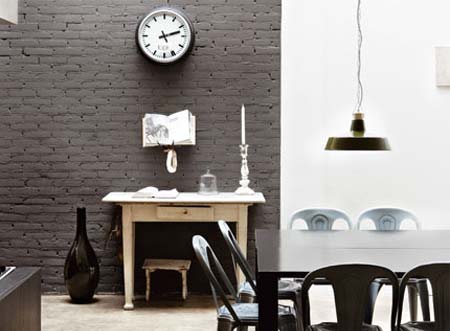
2. Priming the surface
Priming interior brick is necessary to ensure proper bonding between the paint and the wall. A 100% acrylic universal primer is a good choice, such as Prominent Paint Plaster Primer, especially where brick is chalky, as it helps to bond the paint and reduce the number of paint coats required.
3. Choosing the right paint
Next is the type of paint to use. You have a large amount of paint types and sheens to choose from. Painting interior brick will take more time and effort than an ordinary wall. Plus, you will be in close proximity to the paint and its fumes. For these reasons water based paint - such as the Prominent Paints matt or sheen range - should be used.
4. Painting the wall
Lay drop plenty of dropcloths before starting. The easiest and quickest way to apply paint to brick is with a paintbrush as it allows you to get into the crags and crannies of rough brickwork and mortar joins. Have various sized brushes for different tasks.
Painting interior brick is easy but it's also tedious. Working with sections will let you glance back at previously painted areas and catch any drips that have developed plus quickly touch-up any thin areas.
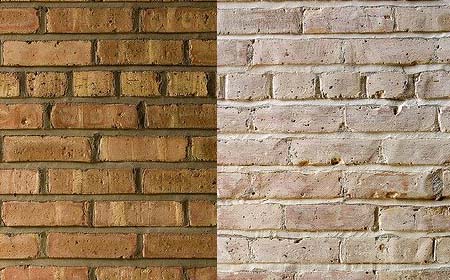
Whitewashing
If you don't want a solid colour on the wall, but rather a lightening effect, whitewashing is the best option to choose. It is also much easier to remove if you change your mind later on.
Bricks washed over with watered down matt paint rather then covered up show variation in tone and depth making it more interesting to the eye. It achieves the lighter, softer look you want yet you can still see the brick underneath.
Cover up with dropcloths before you start - this can get messy. Mix 50:50 paint and water and stir well. The more water you add the more translucent the final result. Use a whitewashing brush to apply the paint to a small section at a time.
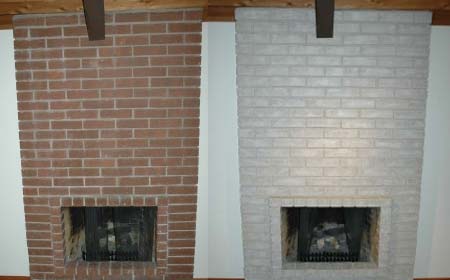
Remember that brick when unsealed is extremely porous and will take a lot of liquid into it before it resembles a colour (which may be just what you want).
Exposed brick is usually always touted as "good looking" by real estate brokers and, indeed, it can add some real character to an otherwise cookie-cutter apartment, but we don't think it is sacred. Some brick is ugly and some is quite dusty over time. The color and condition of the brick determines - for us - what to do with it.
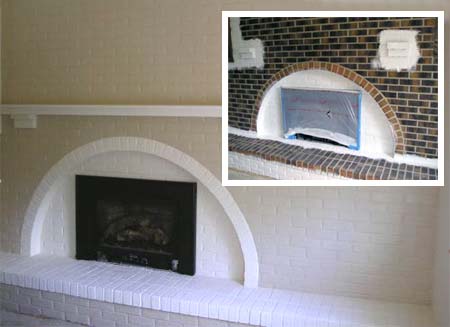






0 comments:
Post a Comment